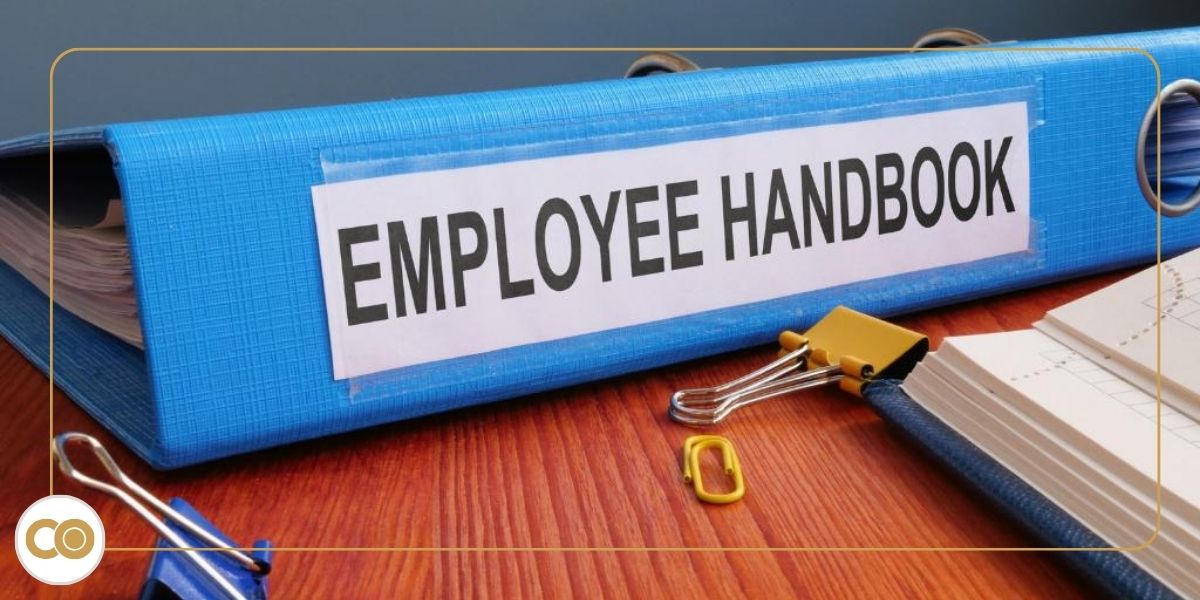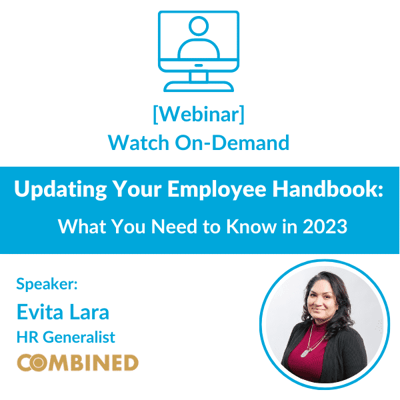7 Employee Handbook Best Practices
February 16th, 2023 | 4 min. read

Every workplace is, at the very least, a little different.
I mean, a corporate office setting doesn’t exactly mirror that of a Disney theme park.
Can you imagine if, despite any differences, all workplaces had the same set of rules? You might walk through your company doors to find your receptionist dressed as Cinderella and your manager leading a parade of 101 spotted dogs around the office.
As entertaining as this image is, it just goes to show that without a clear employee handbook that defines your specific company guidelines, there’s no limit to the workplace chaos that could ensue.
Here at Combined, our HR specialists have helped many employers, just like you, understand the true importance of having an effective employee handbook. We want to make sure that yours is in order so that you’ll never have to worry about workplace disorder.
In this article, we will cover what an employee handbook is and the purpose of having one. By reading it, you’ll learn the 7 best practices for developing an effective employee handbook.
What is an employee handbook?
An employee handbook is your company’s instruction manual for at-work operations. It compiles all of your policies, procedures, and expectations into one organized and easily-accessible document that your employees must review and agree to follow.
What is the purpose of having an employee handbook?
The purpose of your employee handbook is to act as an organization-wide guide and communicate consistent company information with your employees.
With this in mind, it needs to be:
- Well-written
- Straightforward
- Easily comprehensible
Designed with these 3 delivery strategies in mind, your handbook can help make sure that all of your employees are on the same page about workplace operations.
By clearly communicating your company policies, procedures, and expectations with your entire staff, you can not only prevent workplace problems from occurring but can also have a systematic approach to resolving them if they do.
7 employee handbook best practices
What exactly should your employee handbook accomplish in order to be an effective company resource?
Consider achieving these 7 handbook best practices as a surefire way for it to be just that.
1. Your employee handbook should introduce your company
You can learn a lot about a person from a handshake.
Your handbook is this initial, educational handshake with your employees – it is the very first insight they get into the personality of your company, making it the perfect opportunity to explain what your company stands for.
As such, your handbook should provide an introduction that outlines your company mission, vision, values, and goals. These being the most important elements of your company, it only makes sense that they preface employment.
Providing this information in your employee handbook gives employees an immediate understanding of your company culture and also fosters a sense of workplace pride, both of which are proven to boost productivity.
2. Your employee handbook should define core policies and procedures
As a company-wide instruction manual, it shouldn’t be surprising that your employee handbook should offer a rundown of core policies and procedures.
This should include standard employment information such as:
- Code of conduct
- Acceptable attire
- Required work hours
- Compensation schedule
- Benefits program administration
- Antidiscrimination and harassment policy
It should also include company-specific employment requirements like expected behavior, responsibilities, and duties.
With the logistics of policy and procedure covered at the onset of employment, you’ll rest assured that your staff is informed of and agrees to all workplace rules.
3. Your employee handbook should set a standard for employee expectations
Your employee handbook should establish what your employee expectations are – from behavior to performance to policy and procedure adherence.
It should also clearly communicate who your employees can contact with questions or concerns so that any workplace problems can be appropriately addressed.
By setting employee expectations, your handbook can steer your staff toward success in their respective roles. It will also create a standard for fair treatment and remove any perceived bias from your workplace.
4. Your employee handbook should establish a uniform enforcement process for management
The manner in which your leadership team addresses the enforcement of policy and procedure needs to be consistent across the board. Otherwise, the standard of fair treatment and lack of bias built by early expression of employee expectations will be lost.
Your handbook should outline a uniform enforcement method for management. This way, your managers will always have a concrete approach to handling workplace problems. And your employees will also know what to expect from leadership should something go awry.
By detailing this process, your employee handbook can create a company-wide understanding of how workplace problems will be systematically resolved. With this agreement, you also make sure that your entire staff, from higher-ups to new hires, will be aligned while working together.
5. Your employee handbook should create a cohesive company culture
By including the previous four objectives, meeting this one should come naturally. Nonetheless, it is important that your employee handbook explains your company culture.
This means answering a few questions:
- How do you expect to meet your company goals?
- How can each individual employee contribute to this achievement?
- How should employees interact as a team to guarantee company-wide success?
In doing so, you create a framework for investment. Each employee will be invested personally, in their relationships with their coworkers as a team, and in your company as an organization. On the other side of the same coin, you also show how invested you and your company are in the success of your staff.
6. Your employee handbook should reduce compliance risks
Every business is subject to employment laws.
Your employee handbook, then, is subject to detailing these laws so that they are well-understood and followed by your staff.
By including and updating regulations in your handbook, your workforce will be informed of relevant employment laws from the get-go and as they change. This will reduce your risk of compliance violations.
7. Your employee handbook should protect your company
Having employment laws listed and updated is also proof that you place compliance at the forefront of your business operations. In the event of an employee grievance or lawsuit, your employee handbook can serve as a legal document, protecting your company.
Because your handbook is provided and agreed upon by your entire staff, it can minimize your liability should there be any deviation from the terms and conditions set forth by it.
Next steps to your ideal employee handbook
Whether your company is small, large, or somewhere in between, you need to have a standard set of rules in place to ensure successful operations. Without these rules, you leave your business susceptible to all kinds of workplace problems.
This set of rules, if you will, is your employee handbook.
In this article, we explored what an employee handbook is and why it is so important to have one. By reading it, you learned the 7 best practices for achieving a helpful employee handbook.
Are you ready to construct your complete company handbook?
Here at Combined, our HR experts want to assist you. With years of HR field experience, our team can help you craft an employee handbook customized to your company.

|
Wave goodbye to workplace problems with an effective employee handbook! Schedule a free consultation with one of our HR specialists to learn how. |

|
Need to update your employee handbook for 2023? Watch the recorded webinar to get handbook help from our HR expert. |
 |
If you are not yet ready to speak with a team member, you may find these resources helpful: |
This article is not intended to be exhaustive nor should any discussion or opinions be construed as legal advice. Readers should contact legal counsel for legal advice.

